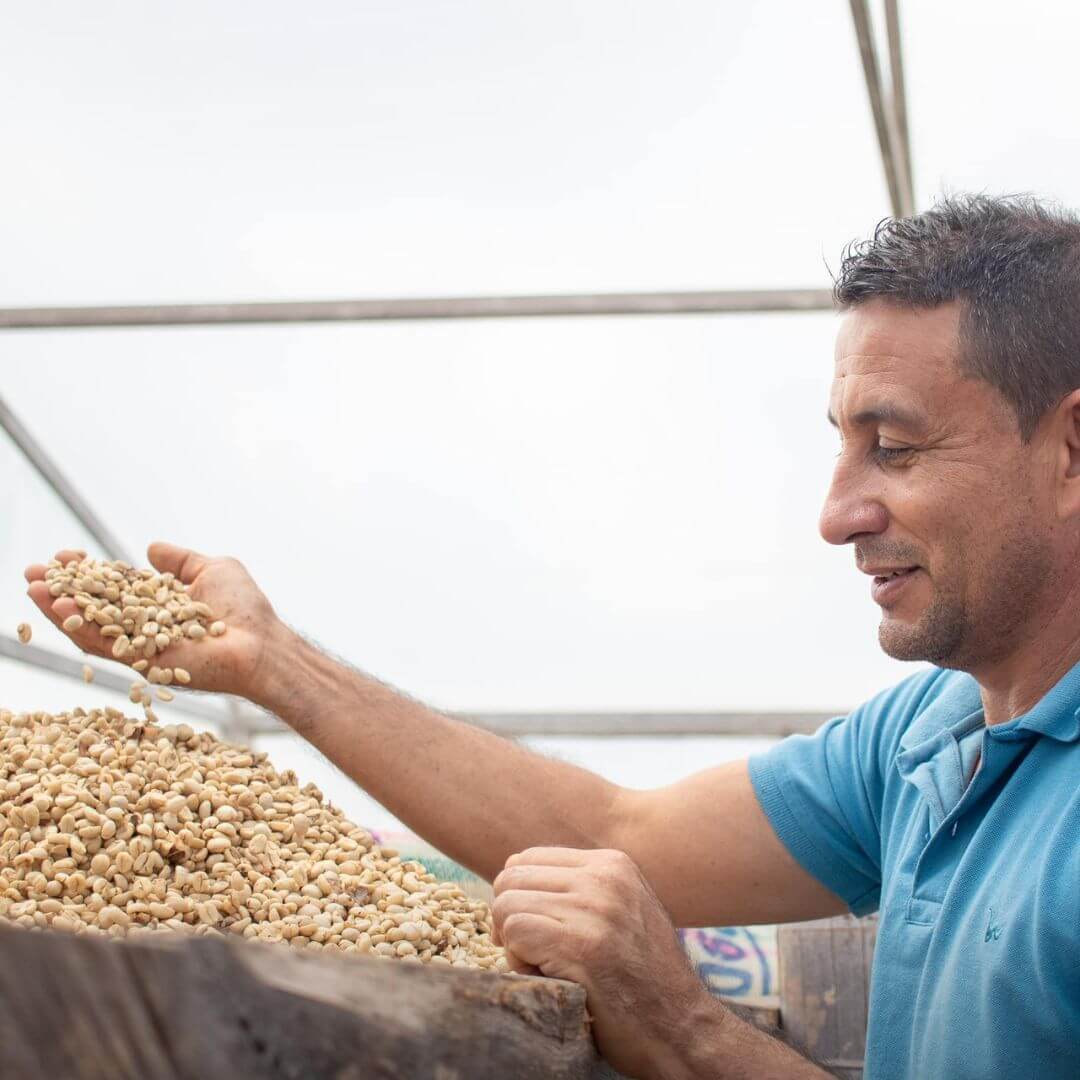
Mastering the Roast: Understanding How Process Methods Impact Coffee Roasting
Share
How to decide the best way to roast coffee depending on the process performed at the farm level? -Naturals, Honey, Washed or Decaf processes-
When roasting coffee beans, the processing method—whether washed, natural, honey, or decaffeinated—plays a crucial role in determining the approach a roaster should take. Each processing method influences the bean's moisture content, density, and inherent flavor characteristics, which, in turn, dictate how the beans should be roasted to bring out their best qualities. Understanding the unique needs of each process helps in adjusting key roasting parameters such as loading temperature, drying phase, Maillard reaction, first crack, development time, final temperature, and overall time.
1. Washed Processed Coffee
Washed processed beans are known for their clarity and brightness in flavor. The washing process removes the fruit pulp before drying, leading to a cleaner cup profile with more pronounced acidity.
Loading Temperature:
For washed coffees, a moderate loading temperature is often ideal. Too high a temperature can rush the drying phase, leading to a loss of nuanced acidity.
Drying Phase: A steady, controlled drying phase is key to preserving the inherent acidity and clean flavors. Rushing this phase may lead to a flatter profile.
Maillard Reaction: This phase should be carefully managed to enhance the sweetness without overshadowing the acidity. A steady Rate of Rise (RoR) during this phase helps in developing a balanced sweetness.
First Crack: Washed beans typically have a well-defined first crack. It’s important to monitor this closely to avoid overdevelopment.
Development Time: The development time should be shorter to medium, ensuring the bright and clean notes are preserved without becoming overly bitter or caramelized.
Final Temperature & Overall Time: Aim for a moderate final temperature to highlight acidity and sweetness. The overall roast time should be balanced, avoiding excessive darkening to maintain the coffee’s characteristic clarity.
2. Natural Processed Coffee
Natural processed beans, dried with the fruit pulp intact, tend to have a heavier body and fruitier, often fermented flavors.
Loading Temperature: A slightly higher loading temperature can be beneficial to kickstart the drying process, as natural coffees typically have higher moisture content.
Drying Phase: Given the denser structure and higher moisture, the drying phase should be extended slightly to ensure uniform moisture loss, which helps avoid uneven roasting.
Maillard Reaction: A more extended Maillard reaction phase is beneficial to deepen the complex fruit and sugar notes characteristic of natural coffees. A controlled, declining RoR can help achieve this.
First Crack: Natural processed beans can have a quieter or less distinct first crack. Roasters need to rely on sensory cues like smell and color in addition to sound.
Development Time: A longer development time helps bring out the body and deepen the complex flavors, but care must be taken not to overdo it, which could lead to excessive bitterness.
Final Temperature & Overall Time: Aim for a slightly higher final temperature to bring out the deeper, fruit-driven notes, but balance it with the overall roast time to avoid losing clarity.
3. Honey Processed Coffee
Honey processed beans fall between washed and natural processes, with some of the mucilage left on the bean during drying. This results in a coffee that combines the clarity of washed beans with the sweetness and body of natural processed beans.
Loading Temperature: A moderate to slightly higher loading temperature can work well, ensuring the beans don’t dry out too quickly, which would mute their complexity.
Drying Phase: The drying phase should be balanced, not too fast, to preserve the natural sugars that contribute to the coffee’s sweetness and body.
Maillard Reaction: A controlled Maillard reaction is crucial to enhance the bean's inherent sweetness without overpowering the delicate balance of acidity and body.
-First Crack: Honey processed beans usually produce a more subdued first crack. As with natural coffees, it’s important to use visual and olfactory cues during this stage.
Development Time: Development should be carefully managed to avoid over-caramelizing the sugars. A medium development time is typically ideal to maintain a balance of sweetness and body.
Final Temperature & Overall Time: Aim for a moderate final temperature, with an overall roast time that allows the bean’s unique characteristics to shine, balancing sweetness with clarity.
4. Decaffeinated Coffee
Decaf processed** beans, regardless of the decaffeination method, are more fragile due to the processing they undergo. They tend to roast faster and require a gentler approach.
Loading Temperature: Use a lower loading temperature to prevent scorching, as decaf beans are often more brittle and less dense.
Drying Phase: The drying phase should be extended slightly and managed carefully to ensure even moisture loss, which is critical for even roasting.
Maillard Reaction: A gentle Maillard reaction phase is key to avoid overdevelopment and bitterness, as decaf beans can easily tip over into these undesirable flavors.
First Crack: First crack can be less pronounced in decaf beans, and it may happen earlier. Close attention is required during this phase.
Development Time: A shorter development time is often necessary to prevent the beans from becoming too bitter or ashy. Aim for a light to medium development.
Final Temperature & Overall Time: Keep the final temperature lower to avoid burning the fragile beans, and reduce the overall roast time to ensure the final cup maintains balance without excessive bitterness.
Conclusion
Each coffee processing method requires a tailored roasting approach to bring out the best in the beans. Understanding the nuances of washed, natural, honey, and decaf processed coffees allows roasters to make informed decisions about loading temperature, drying phase, Maillard reaction, first crack, development time, final temperature, and overall roast time. By adjusting these variables, roasters can highlight the unique characteristics of each coffee, creating a final product that truly reflects the bean's origin and processing journey.
